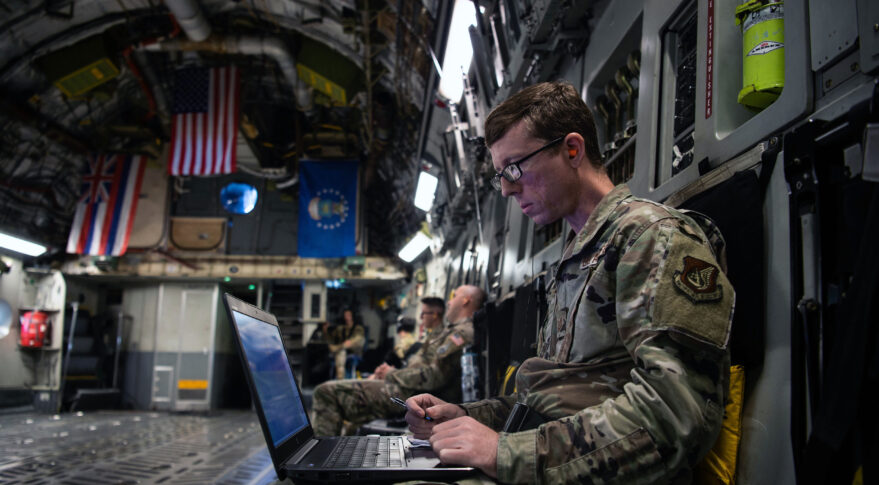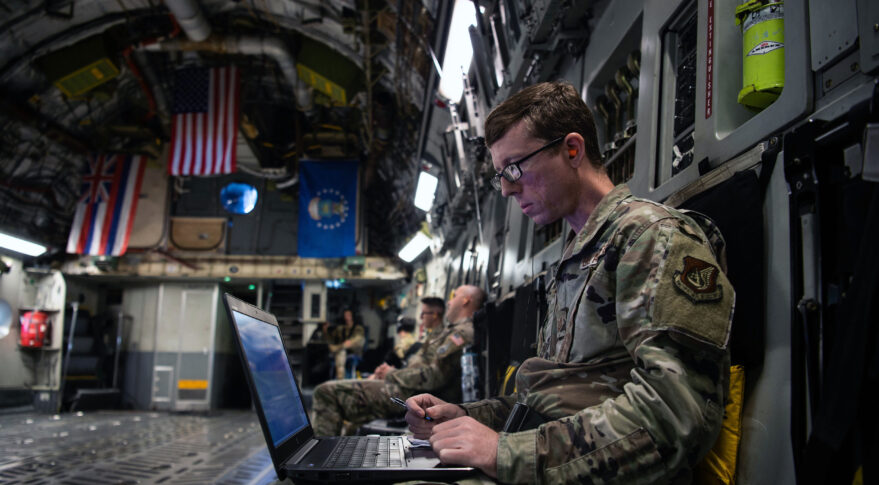
WASHINGTON — U.S. military and allied forces in upcoming exercises will put to the test commercial technologies that could help detect GPS jamming or other activities that disrupt satellite-based navigation.
The project is led by the Defense Innovation Unit (DIU), a Pentagon organization focused on commercial technology. DIU is working with vendors to develop prototype systems that use data from satellites and other sources, artificial intelligence and machine learning tools to locate intentional interference to GNSS signals.
GNSS, short for global navigation satellite systems, includes GPS and other constellations that provide positioning, navigation, and timing (PNT) services.
“Mapping GPS disruptions and contextualizing patterns of behavior are key to mitigating the effects of degraded PNT as well as enabling safety of navigation under such conditions,” DIU program manager Lt. Col. Nicholas Estep said Aug. 17 in a news release.
“Instead of developing, building and deploying hardware tailored for collection of navigation warfare operations, we are accessing currently available commercial data and analytics to address the need for PNT situational awareness,” Estep said.
The ability to detect GPS jamming and spoofing is a growing priority for DoD and for many industries that depend on GPS, as disruptions affect every aspect of operations.
DIU requested bids last fall for the project named Harmonious Rook. It selected several vendors and a non-governmental organization to develop prototype systems.
Palo Alto, California-based Orbital Insight announced in February it was selected for the project. The company integrates different types of sensor data into its platform, including data from electro-optical, synthetic aperture radar and RF monitoring satellites. It also captures vessel traffic data, or Automatic Identification System; air traffic data from the Automatic Dependent Surveillance–Broadcast, or ADS-B, hosted on Iridium communication satellites.
The Orbital Insight platform will help to identify “intentional GNSS interference and manipulation operations across the world,” the company said. “The platform will leverage commercially available data to detect GNSS spoofing, where falsified or manipulated GNSS signals are used to confuse adversaries or obscure illicit activities.”
The international nonprofit Global Fishing Watch (GFW) is participating in the project. “Our work is focused on detecting false position data in the Automatic Identification System (AIS) used by ships. Some of these false positions result from GNSS interference,” a spokesman said.
GFW was founded by Oceana, an international ocean conservation organization; SkyTruth, a technology firm that uses satellite imagery and data to protect the environment; and Google.
HawkEye 360 — a geospatial analytics company that uses satellites to track emissions of radio frequency signals and data analytics to spot GNSS interference — also was selected to develop a prototype, a DIU spokesperson said.
Military exercises
DIU said it will bring GNSS detection prototypes to the Southeast Asia Cooperation and Training exercise in Singapore, focused on maritime crises and response to illegal activities; and the U.S. Army 1st Armored Division’s Command Post Exercise at the National Training Center in California.
“We must leverage non-organic, commercially available software and equipment, like Harmonious Rook, as a stopgap to increase awareness,” said Lt. Col. Patrick Jones of 1st Armored Division’s Space Support Element. “During the exercise, capabilities will be tested to support intelligence, information operations, and command and control elements with commercial geospatial and navigation warfare awareness at the tactical level.”
DIU said it is working to explore the use of publicly available PNT data to draw insight from domestic GPS interference events.
“With widespread users and subscribers that rely on PNT services, any intentional or unintentional disruption can lead to severe transportation, communication, and financial implications,” said DIU. “This highlights the importance of bringing both government and private sector industries together to identify, attribute and mitigate GPS interference as quickly as possible.”
The National Air and Space Intelligence Center and the National Space Intelligence Center (NSIC) are participating in the Harmonious Rook project. “It is a very promising new approach that complements traditional collection methodologies, as it will help our customers by sharing analysis due to the unclassified and commercial nature of the data,” said Scott Feairheller, a senior analyst at NSIC.
The Government Accountability Office noted in a recent report that GNSS interference poses a significant threat to military systems. “Given its ubiquity, the denial or disruption of GPS capabilities could impact aircraft, ships, munitions, land vehicles, and ground troops in military operations and conflicts, said GAO. “For instance, in 2017 the installation of a new system at the San Angelo Airport interrupted civilian GPS systems for both ground and air operations within 15 miles.”

